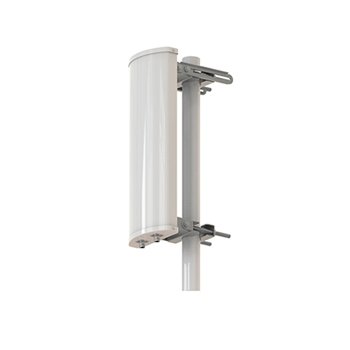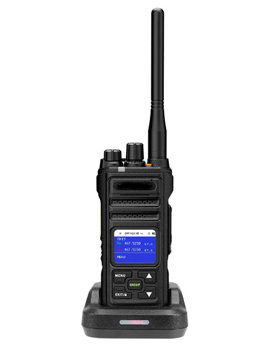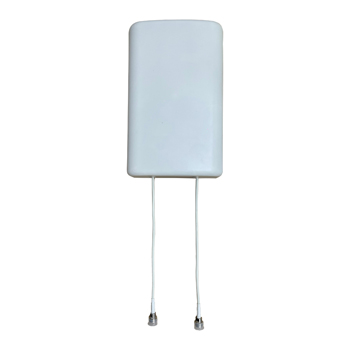
Citizen Broadband Radio Service is a game changer in the modern wireless communication domain. CBRS antennas, specially designed for the efficient use of the CBRS band, plays an important role in setting up 5G networks, private LTE systems and various IoT applications. This article explores the various types of CBRS antennas, their use cases, their involvement in enterprises and 5G wireless technology. Additionally, it also discusses the potential of AI optimized CBRS antennas in shaping the future of wireless technologies.
Table of Contents
ToggleIntroduction to CBRS
CBRS presents as a significant venture in wireless communication offering a shared spectrum that balances accessibility, flexibility, and efficiency. Spanning between the 3.55 GHz – 3.7 GHz range the CBRS spectrum provides a cost-effective alternative to traditional carrier-based options in deploying private LTE and 5G networks.
CBRS antennas act as the driving force of the advancements credited to the CBRS domain. These antennas ensure high speed, low latency connectivity which makes them an essential element in both present and future wireless communication ecosystems.
What is the CBRS Spectrum?
The CBRS band is a 150 MHz bandwidth from 3.55 GHz to 3.7 GHz, exclusively available in the United States and regulated by the Federal Communications Commission (FCC).
Designed as a flexible resource for applications like private mobile networks, macro network extensions, and fixed wireless access the CBRS operates under a three-tier system to ensure efficient usage. At its topmost tier are the incumbent users, such as the U.S. Navy and satellite ground stations, fully protected from interference. Next are the Priority Access License (PAL) users, who have purchased access rights to 10 MHz channels with a duration up to three years. Lastly, the General Authorized Access (GAA) users are able to access the band under a small monthly fee, given that they do not interfere with higher-tier users.
In order to avoid access conflicts, the Spectrum Access System (SAS) mandated by the FCC coordinates usage between tiers, enabling CBRS to accommodate a variety of applications while nurturing innovation in wireless communication.
What is a CBRS Antenna?
CBRS antennas are specially designed for applications within the 3.55 GHz to 3.7 GHz bandwidth, also known as Band 48. These antennas come in a variety of configurations such as directional, omnidirectional, sector, and panel designs. This diversity in design enables effective coverage both indoors and outdoors, as well as mobile connectivity for vehicles, thereby improving overall network capacity and efficiency.
As many businesses, institutions, facilities, and worksites set up private LTE and 5G networks using the CBRS spectrum, these antennas play a crucial role in delivering high-speed connectivity tailored to each organization’s specific needs. Furthermore, as these antennas support use cases such as IoT device integration, smart manufacturing, and campus-wide wireless coverage, they have become essential components in advancing digital transformation.
CBRS antennas provide a cost-effective alternative to traditional carrier-managed networks, enabling users to unlock the full potential of the CBRS band. They offer improved data speeds, reduced latency, and enhanced network capacity in high-demand environments.
Types of CBRS Antennas
CBRS antennas are available in various types, each offering unique advantages in addressing different requirements within the CBRS band. Some of the key CBRS antenna types are as follows:
1. Panel Antenna
CBRS Panel antennas are directional antennas that feature a distinctive flat rectangular shape. These antennas usually offer gains ranging from 6 dBi to 18 dBi with horizontal beam widths of 30 – 120 degrees, making them ideal for targeted signal coverage.
As these antennas are able to focus radiofrequency energy in a defined narrow direction, they are widely used in cellular networks, wireless broadband, and in point-to-point communication systems in dense urban areas where there is a significant amount of interference.
2. Yagi Antenna
These antennas typically consist of a driven element, reflector, and several directors. Designed to provide long-range communication, these antennas offer gains between 7 dBi to 20 dBi with typical beam widths ranging from 20-50 degrees.
As Yagi antennas are able to produce a focused radiation pattern, they usually excel in forming point-to-point links, over-the-air media reception, and remote access where there is a need for stable, high-quality signals over extended distances.
3. Sector Antenna
CBRS Sector antennas are designed for applications requiring wide area coverage within the angular ranges of 60, 90, and 120 degrees.
As these antennas provide a high gain ranging between 10 dBi to 18 dBi, they can guarantee efficient signal transmission over large spaces, effectively reducing the number of antennas required for optimum coverage. Usually, multiple sector antennas are combined together to form cells in order to minimize overlap and interference in CBRS deployments.
These antennas can be designed to dual-polarized and support multi-input and multi-output (MIMO) configurations, they are ideally used in settings where high data throughput and reliability are required.
4. Fiberglass Antenna
Fiberglass antennas feature an omnidirectional radiation pattern and are encased in a durable fiberglass sheath, which enables them to endure harsh outdoor environments.
As these antennas are able to resist extreme weather conditions, UV radiation, corrosion, and high winds, they are usually used in marine communication systems, industrial monitoring systems, and in IoT networks where robust yet consistent performance is critical.
In addition to omnidirectionality, these antennas offer a decent gain ranging from 2 dBi to 12 dBi, making them good candidates for wide areas where the signal direction is subjected to variations.
5. Ceiling Mount Antenna
These antennas are omnidirectional antennas specially designed for indoor use.
With gains varying between 3 dBi to 8 dBi, these antennas offer reliable connectivity across enclosed spaces such as offices, hospitals, and retail spaces, while easily blending with their low-profile aesthetic design.
Ceiling mount antennas are generally used in setting up distributed antenna systems (DAS), private LTE, and enterprise networks, as they provide the best coverage options indoors.
6. Rubber Duck Antenna
Rubber duck antennas are specially designed compact antennas that are commonly used in portable devices for short-range communication.
Featuring gains between 2 dBi to 5 dBi, these antennas are commonly seen in handheld radio devices, IoT devices, and industrial sensors.
The rubber duck antenna features a helical coil that makes it a flexible and durable option that is able to resist physical stress and wear, making it a practical solution for portable CBRS-enabled requirements.
Key Applications of CBRS Antennas
CBRS for Enterprise Networks
CBRS antennas are an essential element in establishing private long-term evolution (LTE) and 5G networks for enterprise environments such as warehouses, campuses, and hospitals.
Especially in warehouses, CBRS antennas are used to maximize operational efficiency by supporting asset tracking, real-time inventory management, and automated material handling through high-speed connectivity across devices, effectively reducing delays in logistics and boosting overall productivity.
CBRS antennas are used in campus settings to facilitate better connectivity for smart building applications such as IoT-enabled lighting, HVAC systems, and video surveillance in order to improve operational efficiency and employee productivity.
In hospitals, CBRS networks are used to assist in critical applications such as real-time patient monitoring, telehealth, and wireless medical devices, providing better healthcare while maintaining compliance with established standards.
Improved reliability, enhanced security, and greater flexibility offered by CBRS antennas provide enterprises with better control over their communications, with reduced dependency on external providers offering scalability with evolving needs.
Integration with 5G Technology
The mid-band spectrum (3.55 GHz – 3.7 GHz) used by CBRS antennas offers 5G NR (New Radio) a balanced bandwidth between speed and coverage.
The CBRS mid-band spectrum is considered ideal as it is faster than the low-band frequencies used in older networks and also covers larger areas than mmWave (extremely high frequency) bands.
CBRS antennas are effective in expanding 5G coverage to areas ranging from densely populated urban cities to rural suburbs.
Furthermore, they can increase network capacity, enabling 5G internet to handle multiple devices at once.
As CBRS antennas use a shared spectrum model that prevents interference and is affordable, they help companies and institutions set up their own 5G networks for ventures such as factory automation, IoT devices, and smart agriculture in a cost-effective manner without facing interference from each other.
Furthermore, as CBRS antennas offer low latency and high data speeds, they can support 5G’s more futuristic applications such as augmented reality (AR), virtual reality (VR), and autonomous cars.
To sum up, CBRS antennas are an essential element for the success of 5G NR as they enable faster, more reliable, and affordable networks.
By expanding the reach of 5G and supporting its associated cutting-edge applications, CBRS antennas ensure that 5G technology can meet its fullest potential.
In Public Safety and Emergency Services
CBRS antennas can provide a dedicated band for first responders with reliable voice and data connectivity during emergencies.
Especially in areas where there is a risk of disruption of traditional cellular networks due to natural disasters or emergencies, CBRS antennas can ensure uninterrupted communication.
This is critical for the success of mission-critical applications such as drone operations, location tracking, and sensor-based monitoring systems.
For Connected Vehicles and Transportation
Vehicle-to-everything (V2X) driven by CBRS facilities are effective for providing improved traffic management, reducing congestion, and contributing to overall transportation safety.
As CBRS antennas provide reliable, low-latency connectivity, they are highly desirable for autonomous vehicles, which require real-time vehicle-to-infrastructure communication to reduce human intervention in tasks like navigation and obstacle detection.
CBRS antennas are also highly effective in fleet management systems, especially in logistics and transportation.
They are used for real-time tracking, monitoring vehicle performance, and optimizing logistic operations, which ultimately reduce operational costs and improve operational efficiency.
CBRS Antenna Vendors and Market Leaders
Leading CBRS Antenna Providers
As CBRS antennas grow in popularity owing to their potential to enhance wireless communication, there is considerable growth in vendors providing various CBRS antenna solutions. Some of the key players that excel in offering CBRS antenna solutions are as follows:
CommScope
CommScope provides a range of CBRS antenna solutions including single to multi band designs which can support both CBRS and legacy services. Also, these antennas offer optimized solutions for high density urban areas with advanced beamforming capabilities to improve throughput and operational efficiency.
Mobile Mark
Mobile Mark offers dedicated flexible antenna solutions for private LTE and CBRS networks. There solution range features a wide range of configurations which are suitable for both commercial and industrial applications.
KP Performance Antennas
This solution provider offers a diverse set of CBRS antenna options for widespread use in fixed wireless access, rural broadband and enterprise related CBRS setups. They also provide dual and multi port configurations specially targeting MIMO applications.
Waveform
Waveform specializes in high performance CBRS antennas such as their QuadPRO High gain directional antenna which features a 4×4 MIMO panel with a narrow-focused beam. They also provide compact solutions suitable for both commercial and residential CBRS requirements in urban and suburban settings.
Samsung
Samsung offers high security low latency CBRS solutions which are highly effective in mission critical applications. Their portfolio includes a wide rage of antenna solutions ranging from Massive MIMO to outdoor small cells all certified by OnGo Alliance.
Product Comparison
Some widely used CBRS antennas are as follows:
| Antenna Model | Manufacturer | Type | Gain | Features | Price (USD) |
| SS-65M-R2 | CommScope | Sector | High | Optimized pattern performance; ideal for dense areas; 4-port design | Not specified |
| QuadPro | Waveform | Directional MIMO | High | 4×4 MIMO panel; high-gain; suitable for CBRS frequencies | $449.99 |
| QuadMini | Waveform | Omni MIMO | Moderate | Low-profile; 4×4 MIMO; designed for CBRS applications | $299.99 |
| Dual Band Sector | KP Performance | Sector | Varies | Covers 2.3-2.7 GHz and 3.5-4.2 GHz; dual-band; 4-port design | $499.50 |
| Omni Antenna | KP Performance | Omnidirectional | 13 dBi | Operates in 3300–3800 MHz; suitable for 5G, LTE, and MIMO 4×4 applications within CBRS band | Not Specified |
Note: Prices are approximate and may vary based on the retailer and specific configurations.
Future Trends in CBRS Antennas
Smart Antennas and AI Optimization
Artificial Intelligence (AI) has the potential to revolutionize CBRS antenna systems in terms of is design and operational efficiency.
When considering design optimization, AI simulations can streamline the antennas testing process contributing to precise radiation patterns with adaptive bandwidth capabilities and optimized impedance matching. Furthermore, by predicting network congestion, dynamic allocation of resources and adjusting coverage based on real time usage patterns AI driven CBRS solutions can ensure reliable operation enhancing network performance.
Emerging Wireless Technologies
As wireless technologies continue to evolve, CBRS antennas shows promise in adapting ti the growing demands of IoT and 6G networks.
CBRS antennas excel in handling for high-density connectivity, making them ideal for ensuring reliable communication between IoT devices distributed across diverse environments with varying signal strengths. With the integration of adaptive beamforming driven by AI in CBRS antennas, smart city and industrial IoT applications can significantly benefit from their enhanced performance.
With the arrival of 6G technology CBRS antennas will be presented with new challenges and opportunities. As 6G emphasizes on ultra reliable low latency communication (URLLC) and massive number of connected devices (mMTC) it presents CBRS antennas with the requirement of being able to handle higher frequency bands such as the sub terahertz spectrum. These advancements will ensure CBRS antennas to stay flexible and prepared to meet the increasing demands of a future with enhanced connectivity.
Conclusion
CBRS antennas remain at the forefront of the modern wireless communication landscape. Their ability to deliver reliable connectivity across diverse environments, enterprises, and IoT applications places them at a significant position in the wireless communication domain.
As the wireless communication industry continues to grow, CBRS antennas will continue on its a pivotal role in meeting the demands of present and next-generation communication networks.







